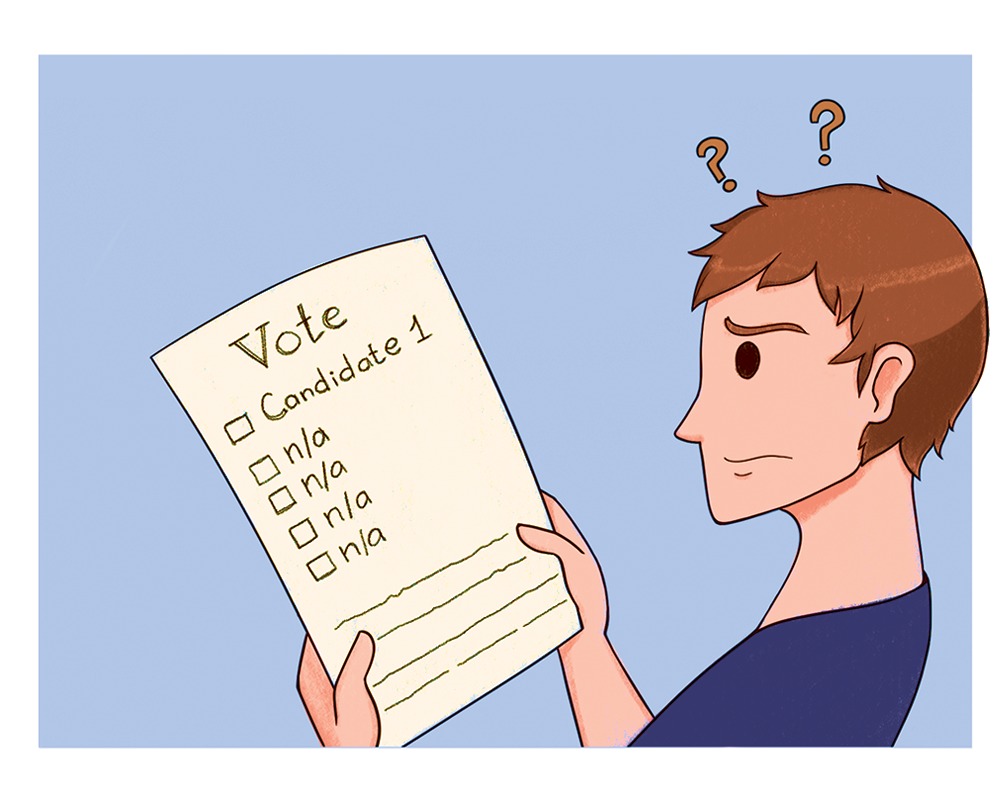After a fall election that saw just one candidate run, what must be done to encourage students to participate?
Multiple positions were open, just one managed to be filled.
The Student Association of George Brown College (SAGBC) ran its 2022 fall election from Nov. 7 to Dec. 2, giving students a chance to represent their peers on the Board of Directors.
For those interested in running, three positions were open, including director of communications and internal, director of operations, and preparatory and liberal studies educational centre representative.
Of those listed above, only one job – director of operations – managed to be filled. The bigger issue was there was just one candidate.
The lone candidate was elected to office with 771 ‘yes votes’ out of 1127 votes in total.
The lack of students running for the board positions may be a concern for the SA, leaving the association to question why students hesitate to come forth for such opportunities.
One reason could be the additional eligibility requirements for the positions of director of communications and internal, and director of operations.
Students wanting to run for these positions are required to have only 50 per cent of their normal course load and maintain a 3.0 GPA in their most recent semester.
“I think it’s a very tough call for many students to have to drop fifty per cent of their course load in the middle of an academic year to take on these positions,” said Charles Wilson, CRO with the SAGBC.
Wilson says that the fall electoral cycle for the two positions makes it so that students who wish to run for these positions are required to drop their course load in the middle of the academic year, which is not feasible.
In other words, the current electoral timing and required qualifications for these positions are found to be problematic.
Several recommendations to potentially resolve these concerns were made in the CRO’s report for fall 2022 elections – changing the election cycle to the general spring cycle for the two positions; using a cumulative GPA instead of the most recent one for evaluation; and setting the course load at either 40 or 60 per cent.
“So, the options for a path forward are either to drop the controlled requirements or change the cycle of the election,” concluded Wilson.
When asked about completely removing the course load requirement, Wilson said that it would not add to the objective. He says the main issue is the overly complex election positions which is out of his scope to tackle.
Additionally, given that no students ran for the position of director of communication and internal, the current board was offered three options by the CRO.
The incumbent may remain in office until a successor is elected as specified by the Canada Not for Profit Corporations Act. Other options include the board appointing a new director, or a by-election is held.
“The incumbent remains in office as a matter of law. That is not an issue which I or the board have any say on. It is a law of Canada, that if you fail to elect a director, that current director remains in office,” Wilson explained.
The second option is provided in the by-laws and doesn’t place a limit on who the board nominates or appoints. The resumes for candidates will need to be submitted to the CRO, who would then present a report to the board for them to vote on a candidate to be appointed.
The incumbent, who is no longer a student at GBC, may mark a contradiction to the votes made against having ex-officio roles in the most recent Annual General Meeting.
This, however, is not a valid argument according to Wilson.
“He was elected by the membership and the membership has not re-elected, so he remains in office by virtue of mandates… until someone else receives that mandate,” Wilson said.
In line with the CRO’s recommendation to carry on with the first option of having the incumbent in office, the board officially voted for the incumbent to stay in office until the spring elections during the Board of Directors meeting on Jan. 23.
A notable area in the CRO’s report stated that the voter turnout for the fall elections was 6.2 per cent. Wilson says, this is average for a school in the Greater Toronto Area (GTA).
However, the lack of candidates may have deterred students from voting. A student, Denilen Patron said, “That’s not really a vote and then your vote is useless if there’s only one person.”
Wilson said that candidates need to engage with the student population.
The main purpose of having a board organized by students is to have student representatives to advocate for their peers. Board members’ roles include bringing students’ challenges to the college’s notice and work towards implementing changes that will help students have a better college experience and create meaningful connections for the future.
“It’s kind of a big position. You have a lot of people’s education and well-being in school on the lines because they make pretty important decisions regarding the way their courses are run, having those changes that improve learning experiences, make education better,” said student Joseph Taraborrelli.
Students feel that more initiatives to interact with students on a daily basis need to be taken by the board members so that students can understand the roles they take on.
Wilson also shared the need to reflect and clarify the board positions and the system of governance at present.
As the new semester starts and the general spring elections come closer, making the board positions more accessible to students may be something for potential candidates to consider in their platform.


